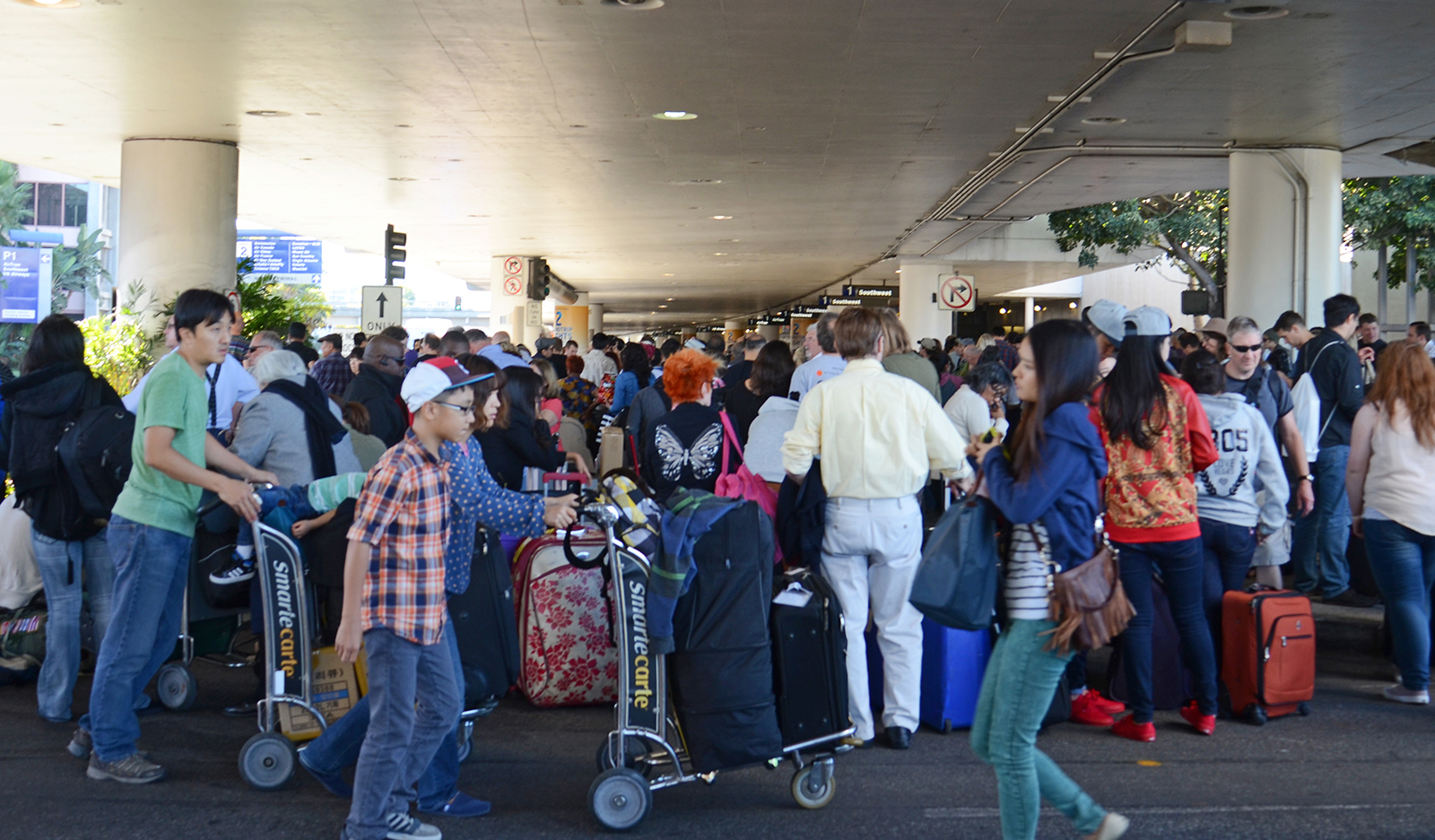LAX ban on curbside pickups will make people wish for the usual traffic jam

(Daily Bruin file photo)
By Amir Guity
Oct. 9, 2019 10:38 p.m.
Angelenos are no strangers to waiting in traffic – even when they’re trying to fly into this city.
The Los Angeles International Airport is notorious for chaotic curbsides at its terminals. Fortunately, the airport has finally introduced measures to ease traffic. Last week, LAX officials announced a ban on curbside pickups for ride-sharing services such as Uber and Lyft, effective Oct. 29. This temporary policy will last until the completion of the airport’s elevated train in 2023.
But for some, the decision is not so fortunate.
Many Los Angeles residents are able to have someone pick them up from the airport, but this is especially bad news for UCLA students who mostly rely on ride-sharing services to make it out of LAX. And out-of-state and international students, who inevitably travel more often, stand to be most affected by the recent ban.
While this new policy creates difficulties for anyone who commutes from the airport using Uber of Lyft, it disproportionately affects students who don’t own a car – and who aren’t exactly surrounded by a community of drivers. Ultimately, it’s a change that offers more inconvenience than it does benefits for travelers.
The airport is designating a parking lot east of Terminal 1 for passengers using Uber and Lyft, employing a shuttle to transfer them between the terminals and the pickup lot. But many travelers are already voicing their irritation with this plan.
Matt Paull, a second-year mathematics student from Rhode Island, is one of UCLA’s almost 7,000 out-of-state undergraduates. He says the new airport policy is inconvenient to say the least.
“I travel through LAX multiple times a year and even though it’s always hectic, I know to call my Uber early to account for the traffic,” Paull said. “It’s much more stressful and annoying when I have to account for transferring my bags to a shuttle.”
The increasing unpopularity of shuttles is not surprising given Ubers and Lyfts have become the preferred method of transportation for many. No one wants to be delayed from loading luggage and making multiple stops on the way out of the terminal.
And not only are students left missing the plane – they’re missing the bus too.
The recent shutdown of the FlyAway bus between Westwood and LAX adds insult to injury. While the FlyAway bus wasn’t the most popular method of transportation, LAX is now insisting on making the alternative to the bus – ride-share apps – even more difficult to utilize.
Airport officials estimate that as a result of restricting ride-share service traffic, the total number of vehicles passing by the terminals will drop by 15%. However, ride-share commuters need to get from the airport one way or another, and that means if not through Uber and Lyft, then through next most convenient vehicle – which will cause the same traffic.
Brian Taylor, director of UCLA’s Institute of Transportation Studies, said that private vehicles are bigger contributors to LAX’s congestion problem because they account for more vehicle miles traveled than Ubers and Lyfts.
“The only vehicles not regulated in some manner by the airport are private vehicles that drive in to pick someone up or drop them off,” Taylor said. “Because these vehicles don’t park and typically entail a round trip for both pickups and drop-offs, they generate the most VMT per passenger of any mode because of all of the deadheading.”
What airport officials don’t seem to have accounted for is that by making it more difficult to use ride-sharing services to leave the airport, they are encouraging a shift to personal vehicle transportation. Congestion will likely be just as bad, if not worse, which means little progress for passengers who would be stuck on the new shuttles anyway.
Martin Wachs, distinguished professor emeritus of urban planning, said that as much as LAX may try to control the flow of travelers and the means of their transportation to the airport, people will inevitably need to travel from LAX – regardless of who is picking them up.
“(People) switch among ground travel modes because of their cost and convenience, and if Uber and Lyft are made more difficult to use, they will likely use other modes – like driving themselves or being driven by friends and family,” Wachs said.
In the past decade alone, the traffic at LAX has increased by half, and there is no indication that this growth will stop. The reality is the shuttle policy fails to account for the increasing population that travels from the second busiest airport in the country.
While the airport’s ban does not address the traffic problem perfectly, LAX feels as though it is at the very least a strategy to combat the congestion problem. After all, bumper-to-bumper traffic isn’t a phenomenon exclusive to the airport, it’s part of a city-wide transportation crisis. But with the airport’s automated people mover scheduled for completion in 2023, spending $65.5 million on an interim solution seems like a lot of work – especially for a service that will never take off.
Students probably never thought they would miss circling the terminal in their Uber.
But when this shuttle is the next best thing taking them home, awkward small talk seems imminently more appealing.

